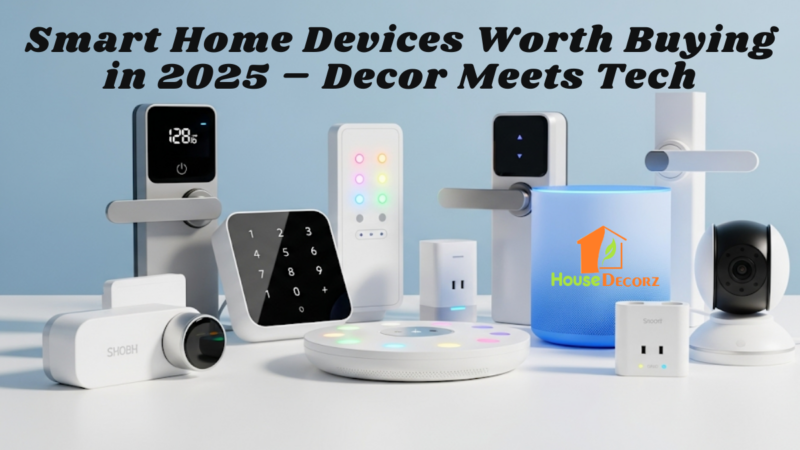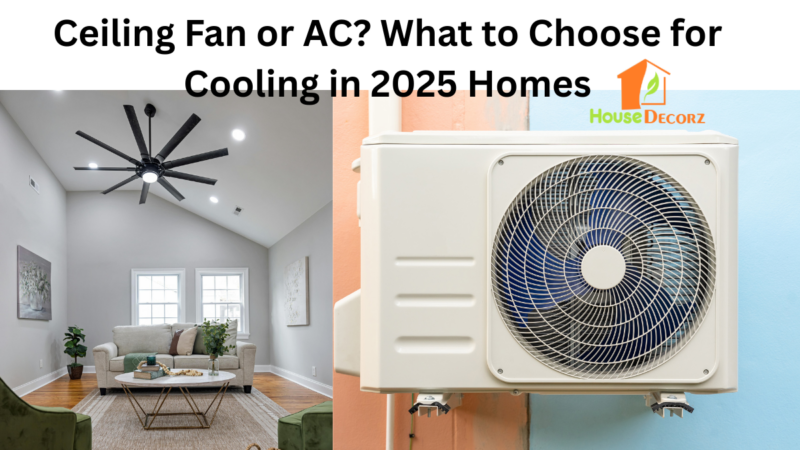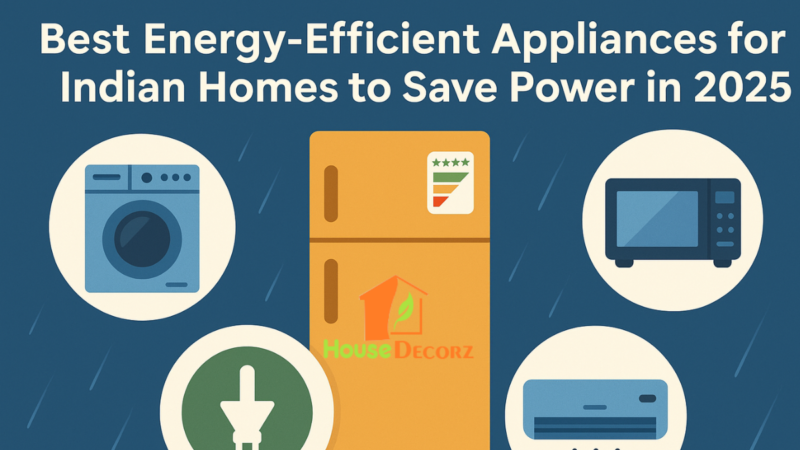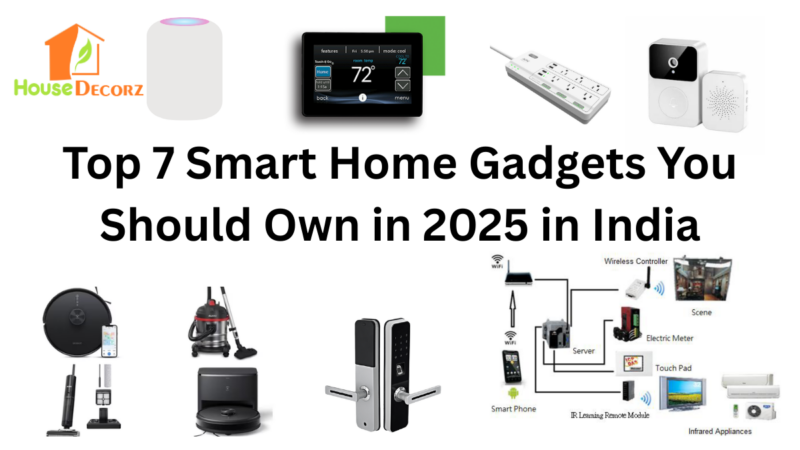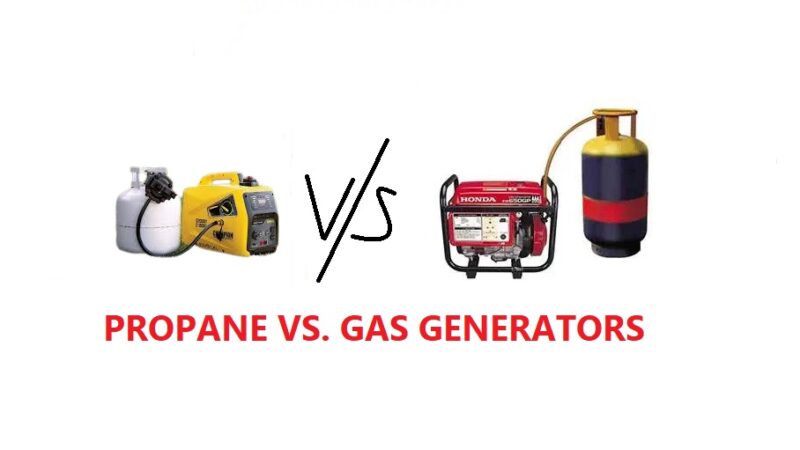How Does An Air Purifier Work?
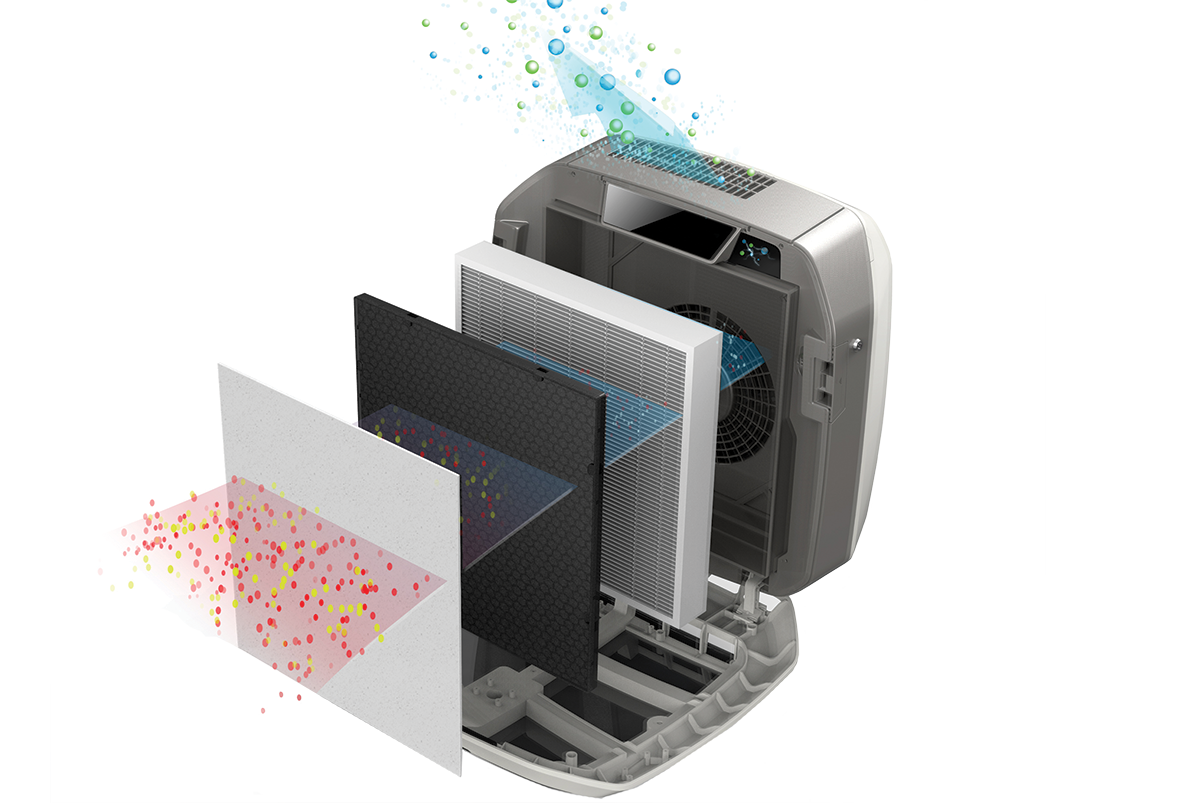
We all want to breathe clean air, right? But sometimes, even inside our homes, the air can get pretty polluted. Just like a dirty carpet can make your feet feel gross, polluted air can make your lungs feel icky. That’s where air purifiers come in as your personal air quality superheroes. They’re like tiny vacuums for your air, sucking up allergens, pollutants, and other nasties. But before you rush out to buy air purifier, let’s dive into how does an air purifier works and find the perfect match for your breathing needs.
Understanding Air Purifier
Your air purifier is like a little helper that keeps the air in your home clean. There are two kinds: portable ones for a single room and whole-house ones that clean the air throughout your home. Most portable air purifiers have different filters to catch different kinds of bad stuff in the air.
How Does An Air Purifier Work?
An air purifier operates by drawing in air from your room, filtering out harmful particles, and releasing cleaner air back into your space. This process helps eliminate pollutants like dust, mould, pet dander, smoke, and unpleasant odours, ultimately improving your home or workspace’s air quality. Understanding how air purifiers work can help you choose the right one for your needs.
Common Indoor Pollutants
Indoor air can contain harmful substances that negatively impact your health, such as:
- Tobacco smoke
- Carbon monoxide
- Radon gas
- Pet dander
- Mould
- Pesticides
- Asbestos and lead particles
These pollutants may not always be noticeable but can be detrimental to your health over time, highlighting the importance of air purification.
Different Types of Air Purifiers
Air purifiers come in various types, each with its own air filtering method. Below is a breakdown of the five main types:
Mechanical Filters
Using a mesh filter, mechanical air purifiers trap particles like dust, dirt, and pet hair. HEPA filters are the gold standard for these, capable of capturing 99.97% of small particles like allergens. Regular filter replacement is necessary to maintain effectiveness.
Electrostatic Precipitators
These purifiers use an electrostatic charge to attract particles to plates. However, to ensure efficiency, the plates must be cleaned frequently.
Ionic Air Purifiers
Ionic purifiers charge particles in the air, causing them to adhere to surfaces like walls and floors. They’re effective for small particles like smoke but less so for larger particles like pollen or dust.
Adsorbent Filters
These filters use activated carbon to absorb volatile organic compounds (VOCs) and odours, making them ideal for neutralizing unpleasant smells during home renovations or from household products.
UV Purifiers
Ultraviolet (UV) air purifiers use UV light to kill microorganisms such as bacteria, viruses, and mould, often found in HVAC systems. These purifiers are effective for maintaining clean air indoors.
The Filtration Process
Most air purifiers draw air from the sides or back, pass it through filters, and release clean air from the top. The purification process typically involves multiple stages:
- Pre-filter Stage: The air first passes through a pre-filter, which captures larger particles like dust, dirt, and hair. This protects the main filters from wearing out too quickly.
- Carbon Filter Stage: The next stage involves a carbon filter, which absorbs odours and harmful VOCs.
- HEPA Filter Stage: Finally, the air passes through a HEPA filter that captures smaller pollutants like allergens and fine dust particles, providing nearly 100% air purification.
How To Choose the Right Filter Quality
The performance of your air purifier largely depends on the quality of its filters. HEPA filters rated H12 or H13 can remove 99.95% to 99.97% of airborne contaminants, making them highly efficient. If odour control is a priority, look for air purifiers with thicker activated carbon layers for enhanced performance.
Sensors and Fans In Modern Air Purifiers
Many modern air purifiers include sensors that monitor air quality and automatically adjust settings based on real-time pollution levels. Laser sensors are especially fast and accurate, ensuring that air quality improves quickly when pollutants are detected.
Another essential component is the fan. A quiet, efficient fan is key for bedrooms and nurseries, where noise could disturb sleep. Some purifiers even produce white noise, which can aid in relaxation and better sleep.
Use and Maintenance
When choosing an air purifier, consider its usability. Many models offer features like WiFi connectivity, allowing you to monitor and control your purifier from your smartphone. Regular maintenance is also crucial for optimal performance. Filters typically last about a year, and some models have washable pre-filters to prolong the unit’s lifespan.
How To Select the Right Air Purifier
Choosing an air purifier requires considering factors like room size, filter type, and ease of maintenance. By selecting the right model for your needs, you can enjoy cleaner, healthier air in your home or workspace.
Understanding Airborne Particles and Indoor Pollutants
Airborne particles, often referred to as particulate matter (PM), can significantly impact your indoor air quality. These particles are categorized by size: PM2.5 are very fine particles that are 2.5 microns or smaller, while PM10 is slightly larger, up to 10 microns. To give you an idea, a micron is one millionth of a meter. PM2.5 particles are particularly concerning because they can penetrate deep into the lungs, making air purifiers essential for removing these harmful particles and improving indoor air quality.
Common Indoor Pollutants and How Air Purifiers Can Help
Air purifiers are designed to address a range of indoor pollutants. Here’s a look at some common indoor contaminants and how air purifiers can assist in managing them:
Allergens
Allergens are substances that can trigger allergic reactions or exacerbate respiratory conditions. Common indoor allergens include:
- Pollen: This allergen often enters homes through open windows and doors.
- Pet Dander: Tiny flakes from pets’ skin can cause allergic reactions.
- Pest Dander: Allergens from rodents like mice can be concentrated and troublesome.
- Cockroach Debris: Cockroaches leave behind allergens that can trigger allergies.
- Dust Mites: These tiny creatures thrive in humid environments and are known to aggravate asthma, especially in children.
According To Research
Studies suggest that HEPA filters in air purifiers can reduce allergens such as pollen and pet dander. However, their effectiveness may be limited for larger particles like dust mites and rodent dander, as these tend to settle on surfaces rather than remain airborne.
Mould
Mould grows in damp areas and releases spores into the air, which can trigger allergies and respiratory issues. While air purifiers can filter out some of these spores, they don’t address the underlying moisture problem.
According To Research
Air purifiers can help reduce airborne mould spores, but they won’t solve the issue of excess moisture that allows mould to grow. Proper moisture control and cleaning are essential for mould removal.
Smoke
Indoor smoke can come from various sources, such as tobacco, e-cigarettes, incense, wood-burning stoves, and vehicle exhaust. HEPA filters can capture smoke particles, but they are less effective at removing harmful gases associated with smoke, like nicotine.
According To Research
Air purifiers can reduce smoke particles and are useful for short-term smoke events like wildfires. However, they are not a complete solution for filtering out tobacco or vape smoke. The best approach is to eliminate the source of smoke.
Gaseous Pollutants
Indoor air can also contain gases such as:
- Carbon Monoxide and Nitrogen Dioxide
- Ozone
- Volatile Organic Compounds (VOCs): Emitted from many household products, these gases vary in their health impacts.
An air purifier with an activated carbon filter is needed to effectively remove gases, as HEPA filters are not designed to handle gaseous pollutants.
According To Research
Many air purifiers claim to remove VOCs, but studies have shown that their effectiveness is often limited. Some purifiers might even release harmful byproducts. When selecting an air purifier, ensure it is specifically designed to address the types of gases you are concerned about.
Benefits Of Using Air Purifier
Air purifiers can make a big difference in the air quality of your home, but their benefits vary depending on several factors, such as the type of filter, Clean Air Delivery Rate (CADR), and how consistently you use them. Here’s a breakdown of how an air purifier can improve your living environment:
Relief from Allergies
If you suffer from allergies, an air purifier can be a game-changer. It helps remove common allergens like pollen, dust mites, and pet dander from the air, easing your symptoms and making your home more comfortable.
Asthma Management
For those with asthma, air purifiers can help by reducing exposure to triggers like dust, smoke, and pollen. This can help manage asthma symptoms and potentially decrease the number of asthma attacks.
Reducing Dust
Dust can quickly accumulate in your home, but air purifiers with HEPA filters are designed to capture fine dust particles. This can help keep your home cleaner and reduce the amount of dust that settles on furniture and surfaces.
Controlling Pet Dander
If you have pets, you’re likely familiar with the challenge of managing pet dander. An air purifier can help by filtering out this allergen, making the air more breathable for sensitive people.
Cutting Down Particulate Matter
Particulate matter (PM2.5) consists of tiny particles that can affect your respiratory health. Air purifiers with HEPA filters are effective at reducing these particles, often cutting their concentration by 50% or more.
Mitigating Airborne Viruses
Some air purifiers are equipped to handle airborne viruses by filtering out very small particles. Many claim to remove up to 99.9% of particles as small as 0.1 microns. Advanced models, particularly those with UV light technology, have been shown to help reduce virus levels in settings like hospitals.
To get the best results from your air purifier, choose one that fits your specific needs and use it regularly.
Air Purifier Electricity Usage
Air purifiers have different settings that can help you save energy. It’s like having different gears on a bike. Normal mode is like cruising in low gear, using little energy. Night mode is like coasting downhill, using even less. Maximum mode is like sprinting uphill, using the most power, but you’ll usually only need to use it for a short time.
Is Air Purifiers Safe For Use?
Air purifiers are generally safe to use and can significantly improve indoor air quality. Think of them as personal air quality guardians, protecting you and your family from harmful pollutants.
To ensure optimal performance and safety:
- Strategic Placement: Place your air purifier in a well-ventilated area where it can circulate air effectively.
- Regular Maintenance: Keep your purifier clean by following the manufacturer’s filter replacements and cleaning instructions.
Is Cleaner Air Worth the Investment?
According to the World Health Organization, indoor air pollution can be just as harmful as outdoor air pollution. It can lead to serious health problems, including heart disease and lung cancer. Thankfully, air purifiers can help.
Air purifiers with HEPA filters are especially effective for people with allergies, asthma, and cardiovascular issues. They can capture harmful particles like dust, pollen, and pet dander, improving the air quality.
While air purifiers are valuable tools, they’re not a complete solution. Combine their use with proper ventilation, regular cleaning, and minimizing indoor pollutants for best results.
Recommendation
Where To Put Air Purifier In Your Home?
How To Clean Air Purifier Filter?
How To Fix Levoit Air Purifier Red Light Problem?
How To Use LG Washer Tub Clean Cycle?
Fixing a GE Dishwasher Without Power or Lights: A Step-by-Step Guide
Ninja Blender Blinking Red Light – How To Fix Instantly
How To Relight Your Water Heater’s Pilot Light
What To Do When Microwave Fan Won’t Turn Off
Conclusion
In conclusion, air purifiers are a valuable investment for anyone seeking to improve their indoor air quality. By understanding how they work, the types of pollutants they can target, and the factors to consider when choosing one, you can make an informed decision and breathe a sigh of relief.
Remember, a clean air environment is essential for your well-being. So, why not invest in an air purifier and experience the difference firsthand? Your lungs will thank you.
FAQs
Q: Do air purifiers actually make a difference?
A: Yes, Air purifiers with HEPA filters are great for trapping dust and other stuff in the air. They won’t get rid of all the dust, but they’ll make the air you breathe a lot cleaner.
Q: What are the disadvantages of an air purifier?
A: HEPA air purifiers can be expensive to maintain. Filters need to be replaced regularly, especially in areas with high levels of pollution. This can be inconvenient and time-consuming. Additionally, HEPA filters are primarily designed to capture particles, not eliminate odours.
Q: Do doctors recommend air purifiers?
A: Air purifiers can help make the air cleaner and relieve allergies. However, they might not be the best option for kids with seasonal allergies. They might not help enough to be worth it.
Q: Do air purifiers dry out rooms?
A: Air purifiers don’t dry out the air but can make it feel drier. This is because they move the air around, which helps water evaporate from things like your skin and the walls.

